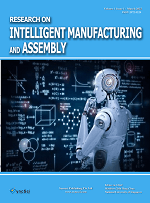Vol 3 No 1 (2024)
Full Issue
Research Article
Self-learning AI in Educational Research and Other Fields
There are several areas where self-learning AI is actively used. Machine learning and deep learning allow you to identify patterns and improve performance. Algorithms such as neural networks can adapt and improve based on experience. Self-learning GPTs are used to dialogue with humans. Computer vision recognizes and classifies images. Recommender systems analyze user preferences and offer personalized solutions. Adaptive robotic industrial control systems can optimize processes by adapting to changing conditions and data. Self-learning intelligent systems help detect and respond to new threats and attacks by analyzing network traffic and user behavior. These technologies continue to evolve, opening up new research opportunities for students in the field of education. Self-learning AI helps programs learn, draw conclusions, and use them in the future. Programming languages do not consider algorithms as data. Programs do not have access to themselves. To learn, you need to change, and for this you need to have access to your own code. Then self-learning becomes possible. By generating the logic of self-learning algorithms, they can improve the program, it becomes different from its source code, and these changes must be saved. The interpreter of the algorithm improves the intelligence of the program, and it becomes the author of optimal solutions. The programming language of self-learning algorithms Author allows students to form the logic of self-learning algorithms to create intelligent systems that can help them in research activities. These systems are able to independently improve their skills and accuracy without explicit programming for each new type of task.
Modeling & optimization of Ti6Al4V turning for sustainable shearing considering rake angle
Titanium alloys, such as Ti6Al4V, have become increasingly prevalent in aerospace and biomedical industries owing to their exceptional mechanical properties and corrosion resistance. However, the machining of these alloys presents significant challenges including high tool wear, poor surface finish, and low productivity. This study focused on enhancing the machinability of Ti6Al4V during CNC turning using the Taguchi optimization method. This approach aims to identify the optimal cutting parameters that minimize the surface roughness, flank wear, and crater wear, thereby improving the overall machining performance. This study systematically investigated the influence of various cutting parameters on machining outcomes. The experimental results demonstrate that the Taguchi method effectively determines the optimal process parameters, leading to a significant reduction in surface roughness and tool wear. These findings highlight the potential of the Taguchi optimization technique for achieving improved machinability and sustainability in the machining of Ti6Al4V.
Formation of reflexive generative A.I. with ethical measures of use
The application of reflexive generative AI in the social sphere will improve the quality of life of individuals and society. Its commercial application will require compliance with ethical standard measures to ensure that its use does not cause harm. The development, implementation and use of an ethical standard for the use of reflexive generative AI will increase the safety of its use. The ethical use of generative AI by individuals should be automatically regulated by it. The reflection of generative AI is implemented by the AGI multilogic and ensures the validity of content generation.
Review
Artificial intelligence (AI) is playing an increasingly vital role in transforming the medical field, particularly in areas like medical imaging, clinical decision-making, pathology, and minimally invasive surgery. The rapid growth of medical data and the continuous refinement of machine learning algorithms have propelled AI's integration into healthcare. This study explores the advancements and applications of AI, specifically machine learning algorithms and intelligent medical robots, in enhancing diagnostics, treatment, and healthcare delivery. A comprehensive review of current AI applications in healthcare, including its use in medical imaging, pathology, clinical decision-making, and robotic-assisted surgery, was conducted. AI technologies such as the Da Vinci Surgical Robot and machine learning-based diagnostic tools have significantly improved diagnostic accuracy and the precision of minimally invasive surgeries. AI-driven systems also contributed to better clinical decision support, faster recovery times for patients, and more accurate treatment plans. Overall, AI, through machine learning algorithms and intelligent medical robots, is revolutionizing healthcare by offering promising improvements in diagnostics, surgical precision, and patient care.
Commentary

Pages 94-99
Aspects of information and spiritual similarity of real and virtual spaces
The results of numerous studies demonstrate the possibility of using the same approaches to studying real and virtual space in the context of their spatial perception. The study of virtual space can be carried out using the same parameters as physical space, and they should be considered equivalent. Virtual space is only one of the strategies for information copying of real space, the result of an irresistible human need to expand the horizons of research. Virtual space does not pose any threat to reality if we interpret the virtual environment as a transformation of the real environment, a new way of studying the mutual penetration of the virtual and real worlds. Learning to navigate in virtual space leads to safer life in real space.



 Evgeniy Bryndin
Evgeniy Bryndin



